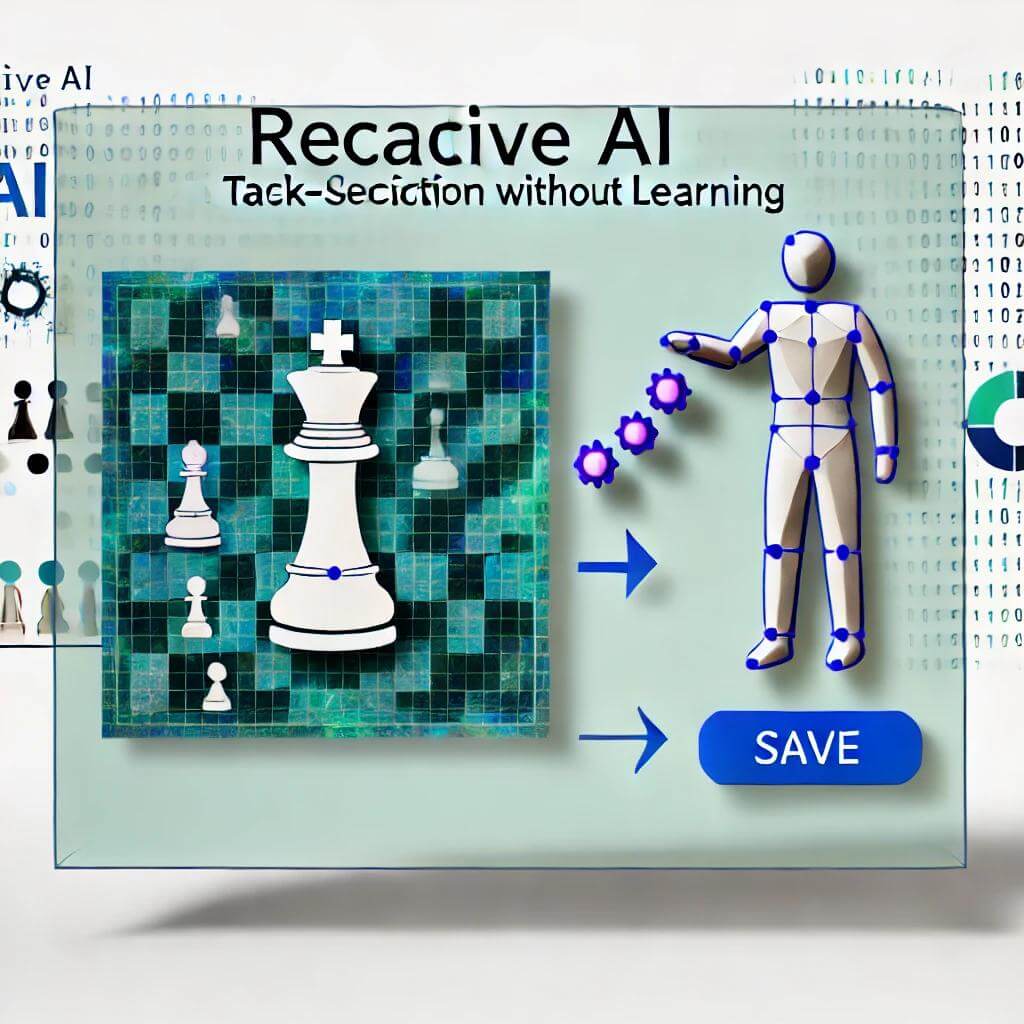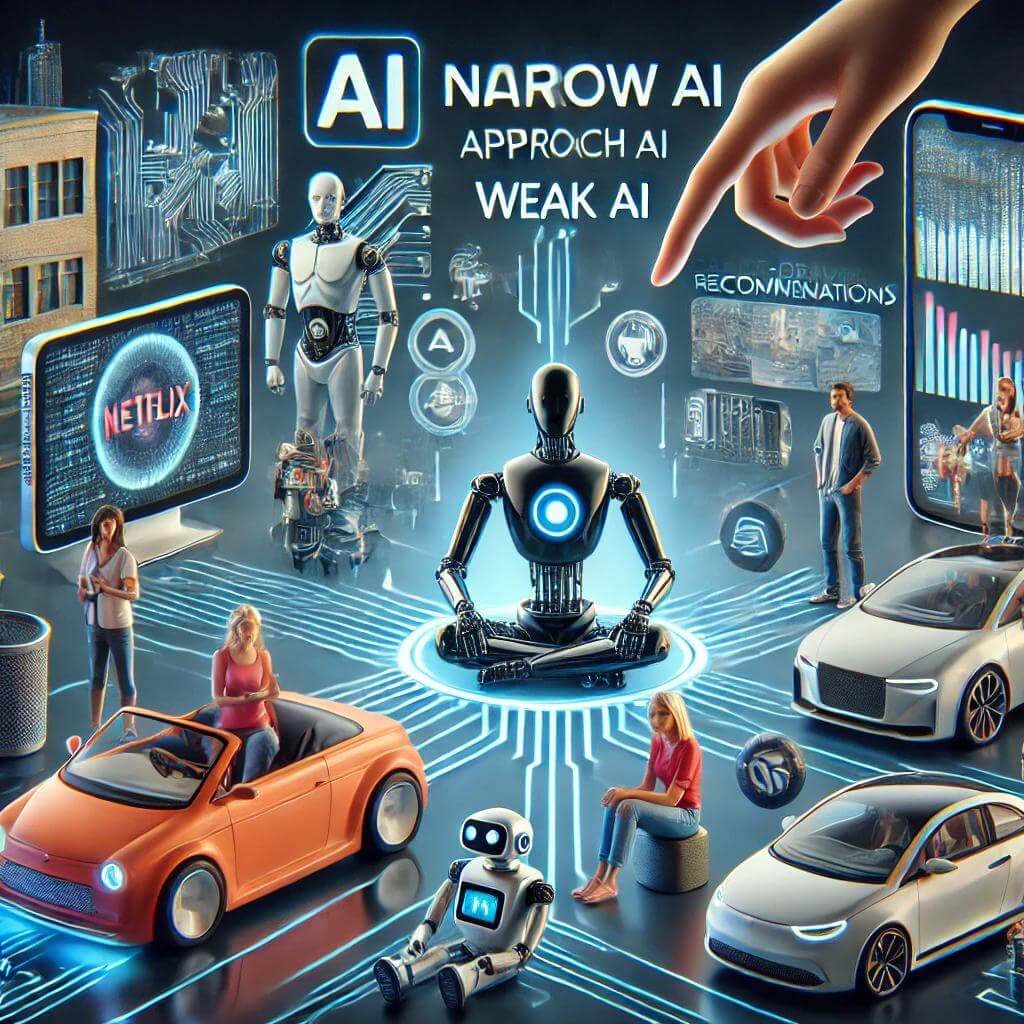Reactive AI: Understanding Simple Decision-Making
Reactive Machines: The Simplest Form of AI
When we think about artificial intelligence (AI), it’s easy to get caught up in futuristic ideas of machines that think and learn like humans. But not all AI systems are designed to learn. Some are built purely for reacting—and they do it very well. These are called Reactive Machines, and they represent the simplest form of AI.
In this article, we will explore the concept of Reactive AI, understand how it works, look at its applications, and discuss its limitations. I’ll guide you through examples like Deep Blue and automated factory robots to show how reactive machines are used today, and why they’re important in the broader AI landscape.
What is Reactive AI?
Reactive AI, also known as Reactive Machines, refers to systems that respond to specific inputs in real-time without using past experiences to inform future actions. These systems are designed for specific tasks and do not have the ability to learn or adapt based on historical data. They can process current information and make decisions instantly, but they cannot retain memories or improve over time.
How Reactive AI Works
Reactive AI systems function based on pre-programmed rules and logic. They make decisions purely by evaluating the current state of a task and selecting the most appropriate action. The AI system reacts to what it “sees” in the moment and does not store data from past interactions to influence future decisions.
Key features of Reactive AI:
- Task-specific: Designed to perform one task efficiently, such as playing chess or controlling a factory robot.
- No memory: Does not store data or learn from past actions.
- Instant decision-making: Evaluates current inputs and makes immediate decisions based on them.
How It Works: Simple Decision-Making Models
Reactive AI uses logic-based models to perform tasks. These models follow a set of rules or algorithms that dictate how the machine responds to specific inputs.
One of the most famous examples of a reactive machine is Deep Blue, IBM’s chess-playing computer. Deep Blue didn’t “learn” how to play chess in the way humans do. Instead, it calculated all possible moves in real time, selecting the best option based on its programmed logic.
Deep Blue: Reactive AI in Action
Deep Blue gained fame when it defeated world chess champion Garry Kasparov in 1997. The system evaluated millions of possible chess moves, calculating the best possible move within seconds. It did this without “learning” from previous games—each move was calculated based on the current game state.
- Instant decisions: Deep Blue used reactive AI to evaluate and decide on moves in real time.
- No learning: Despite its advanced capabilities, Deep Blue could not remember previous games or improve its strategies over time.
Applications of Reactive AI
Though Reactive AI lacks the learning capabilities of more advanced AI systems, it plays a crucial role in several industries. Its strength lies in its ability to perform repetitive tasks consistently and without error.
Gaming AI
Reactive AI is used extensively in gaming, where systems need to respond instantly to a player’s actions. In classic video games like Pac-Man or even in modern strategy games, AI opponents are reactive—they make decisions based on the player’s moves but do not improve over time.
Automated Customer Support
Some customer support chatbots use reactive AI to answer basic inquiries. These bots are programmed with a set of rules that guide their responses, but they cannot improve or adapt to complex customer needs. For example, if you ask a basic question like “What are your opening hours?” the AI will react and provide the information, but it will not learn from the interaction.
Factory Robots
In manufacturing, Reactive AI powers robots that perform repetitive tasks, such as assembling parts on a production line. These robots are programmed to react to specific inputs, like the presence of a new part, and execute the same action each time without learning or adapting.
Limitations of Reactive AI
While Reactive AI is highly efficient at performing specific tasks, it has several limitations. The most significant is its lack of memory and inability to learn. This makes reactive systems less flexible compared to other forms of AI, such as Machine Learning or General AI.
Key Limitations:
- No Adaptability: Reactive AI systems cannot adapt to new tasks or environments. If something changes, the AI won’t be able to adjust its behavior.
- No Learning: Since these systems don’t store data or learn from past experiences, they cannot improve over time.
- Limited Decision-Making: Reactive AI makes decisions based solely on current inputs, which limits its ability to handle complex or unpredictable tasks.
Reactive AI vs. Learning AI
| Feature | Reactive AI | Learning AI |
|---|---|---|
| Memory | No memory or ability to learn | Learns from past data and experiences |
| Decision-making | Based on current inputs only | Uses data to make informed decisions |
| Adaptability | Cannot adapt to new tasks or changes | Adapts to new tasks and environments |
| Task Complexity | Suitable for simple, repetitive tasks | Can handle complex, multi-step tasks |
Examples of Reactive AI
Reactive AI systems are more common than you might think. Here are some real-world examples of how reactive AI is used in different industries.
IBM’s Deep Blue
As mentioned earlier, Deep Blue is one of the most famous reactive AI systems. It revolutionized the way we think about AI by defeating one of the greatest chess players of all time. However, it was a purely reactive system—it did not learn or adapt, it simply followed pre-programmed algorithms to calculate the best chess moves.
Factory Robots
In the automotive industry, robots assemble cars and parts based on reactive AI systems. These machines follow specific instructions and repeat the same action hundreds or even thousands of times per day. The robots do not learn or improve but are highly efficient at performing repetitive tasks.
Simple Recommendation Engines
Some recommendation systems—like those that suggest products on websites based on what you are currently browsing—use reactive AI. These systems analyze the items you’re looking at and recommend similar products, but they do not learn from your past purchases or preferences.
Conclusion
Reactive AI, while simple, plays a critical role in many industries by enabling machines to react to specific inputs in real time. From chess-playing algorithms like Deep Blue to automated factory robots, reactive AI systems are efficient and reliable for repetitive tasks.
However, their lack of memory and inability to learn limits their adaptability. As technology continues to evolve, reactive AI will likely remain important in certain sectors, but more advanced forms of AI will take over in areas where learning and flexibility are essential.




Post Comment